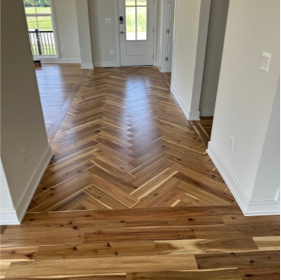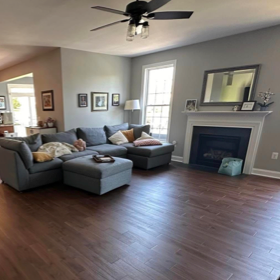Luxury Vinyl
Elevate your interiors with the perfect combination of style, resilience, and functionality. At Petersen's Carpet & Flooring in Frederick, MD, our luxury vinyl flooring offers stunning designs, unparalleled durability, and ease of maintenance.
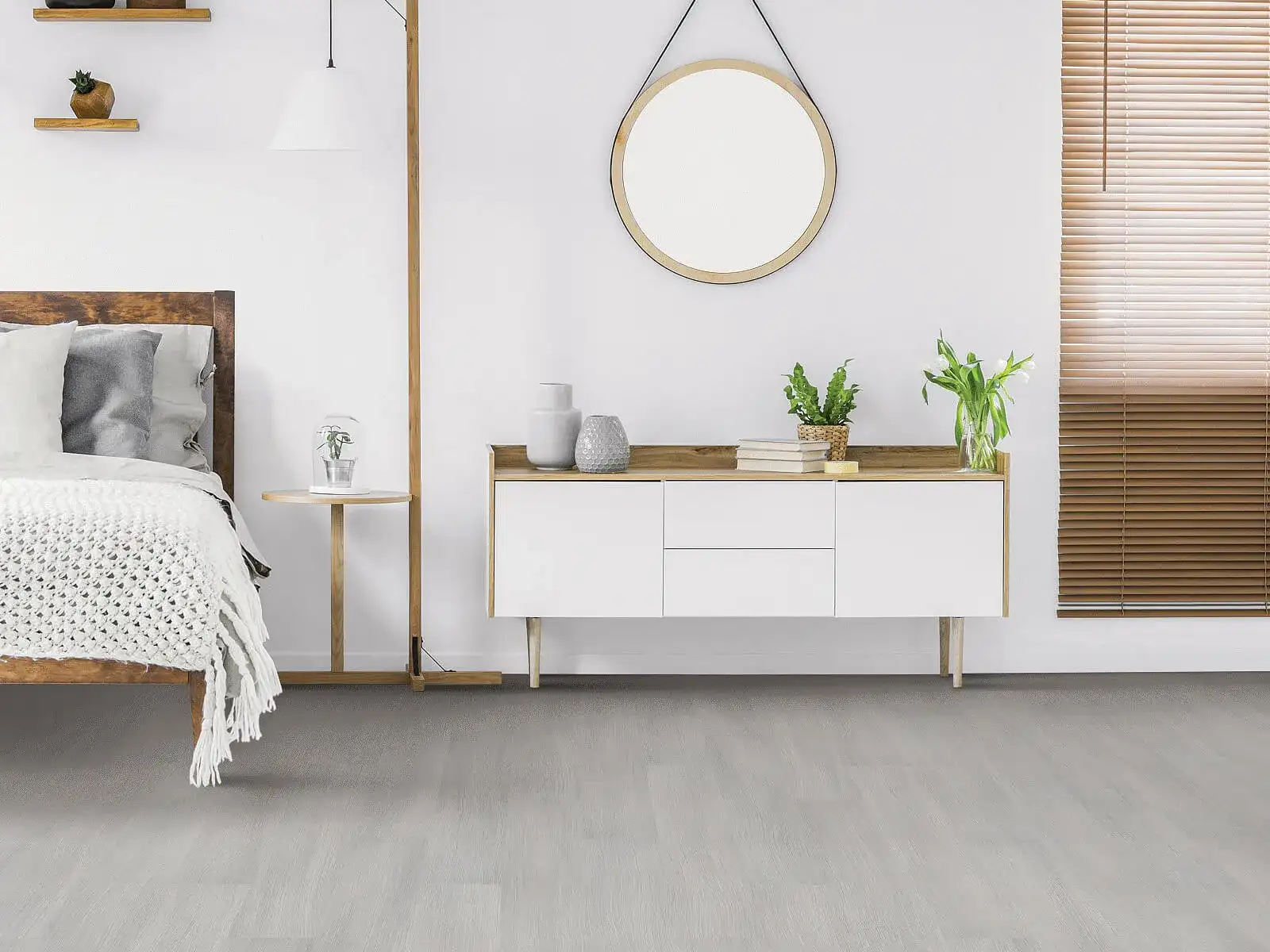
The Beauty and Versatility of Luxury Vinyl
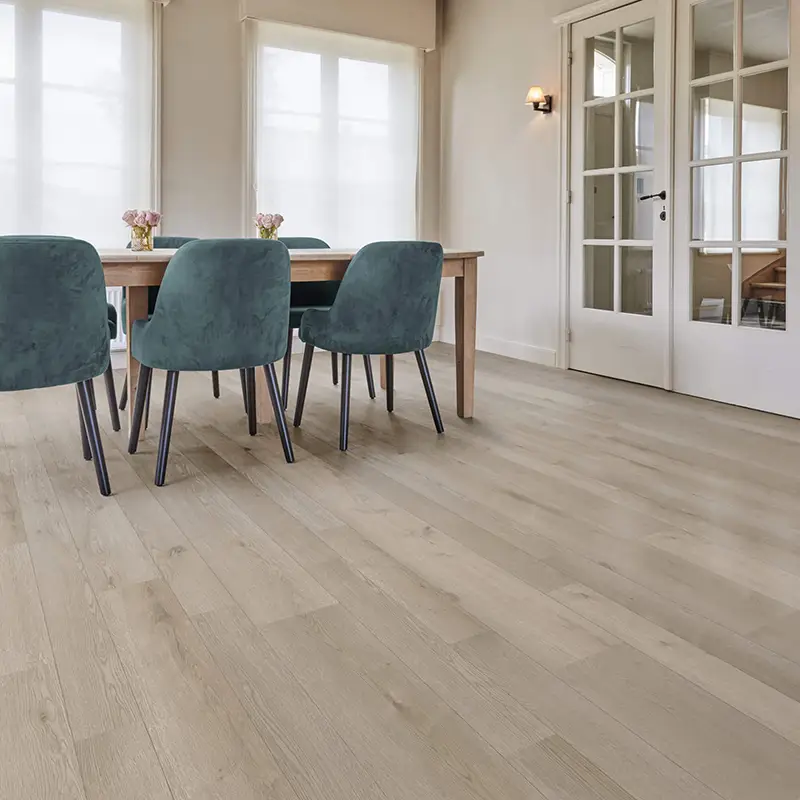
Luxury vinyl flooring redefines the possibilities of resilient flooring, offering a sophisticated and elegant alternative for homeowners. Available in plank (LVP) and tile (LVT), luxury vinyl seamlessly replicates the beauty of natural materials, from the warm tones of hardwood to the cool elegance of marble. Its exceptional durability, waterproof properties, and easy maintenance make it an ideal choice for today's busy lifestyles. With a vast array of colors, textures, and finishes, luxury vinyl allows you to truly customize your living space.
Luxury vinyl flooring features a multi-layer design for exceptional durability. The wear layer provides protection against scratches and stains, while the printed design layer offers realistic visuals of wood, stone, or tile. A rigid or flexible core enhances stability and comfort underfoot, and the waterproof backing ensures peace of mind in moisture-prone spaces.
Luxury vinyl plank (LVP) captures the timeless appeal of hardwood, while luxury vinyl tile (LVT) delivers the elegance of stone or ceramic. Choose from wood-look styles in warm oak, cool ash, or deep walnut tones, or explore stone- and tile-look options with textured surfaces that add dimension and character to your space.
When selecting luxury vinyl, consider the room’s purpose, foot traffic, and your design vision. Waterproof luxury vinyl is ideal for kitchens, bathrooms, and entryways, while thicker planks or tiles with enhanced wear layers are perfect for busy households. Opt for lighter hues to create an open, airy feel or darker tones for depth and sophistication.
The Petersen’s Guarantee
At Petersen's Carpet & Flooring, we stand by our tagline: “We WILL Find a Way to Help.” This isn’t just a slogan—it’s a promise. Our team of skilled professionals is dedicated to providing top-tier service at every step of the process. Whether you need custom installation, repairs, or even specialty services like restretches and board replacements, we’re here to exceed your expectations and stand behind our work.
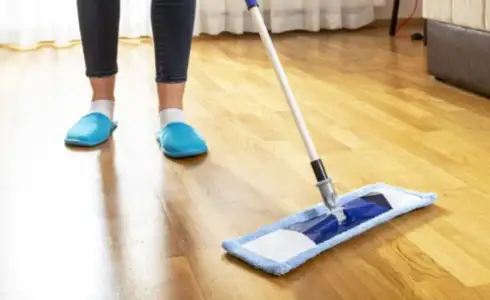
Caring for Luxury Vinyl Floors
Learn simple steps to maintain the beauty and performance of your luxury vinyl flooring.
The Luxury Vinyl Installation Process
Trust our skilled team for a seamless installation that ensures long-lasting results.

Room Visualizer
Bring your flooring vision to life with our user-friendly room visualizer. Experiment with various flooring types, colors, and styles to see how they'll transform your space. It's the perfect tool to help you make an informed decision.
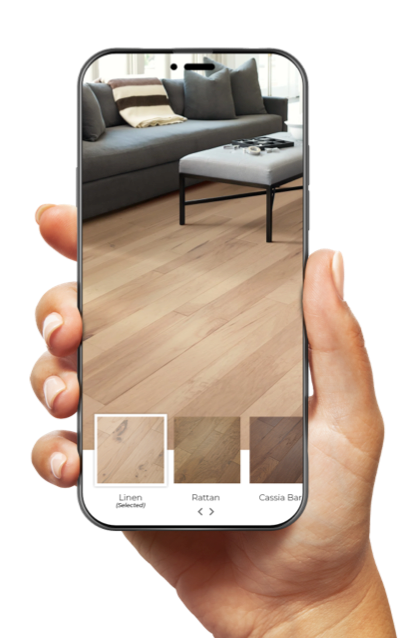
See before
you buy
Browse
at home
Snap. Tap.
Transform
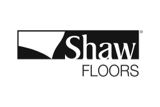
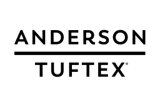

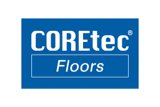

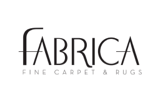
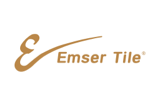


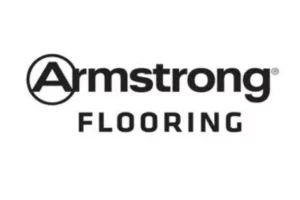
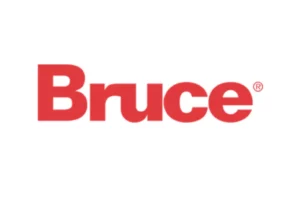
Luxury Vinyl Inspiration
Explore our gallery to find inspiration and see the latest trends in luxury vinyl design.
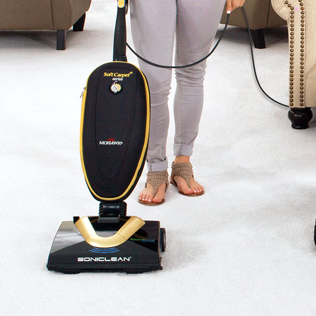
Vacuums
Maintain the beauty and longevity of your new flooring with the right vacuum. Explore our high-quality vacuums.
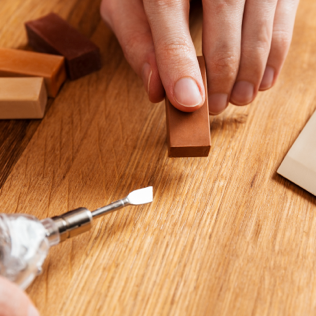
Repairs
Our experienced team can handle a wide range of issues, from minor repairs to complete floor replacements.
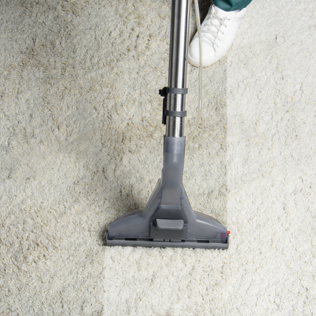
Carpet Cleaning
Keep your carpets looking their best with our professional cleaning services.

